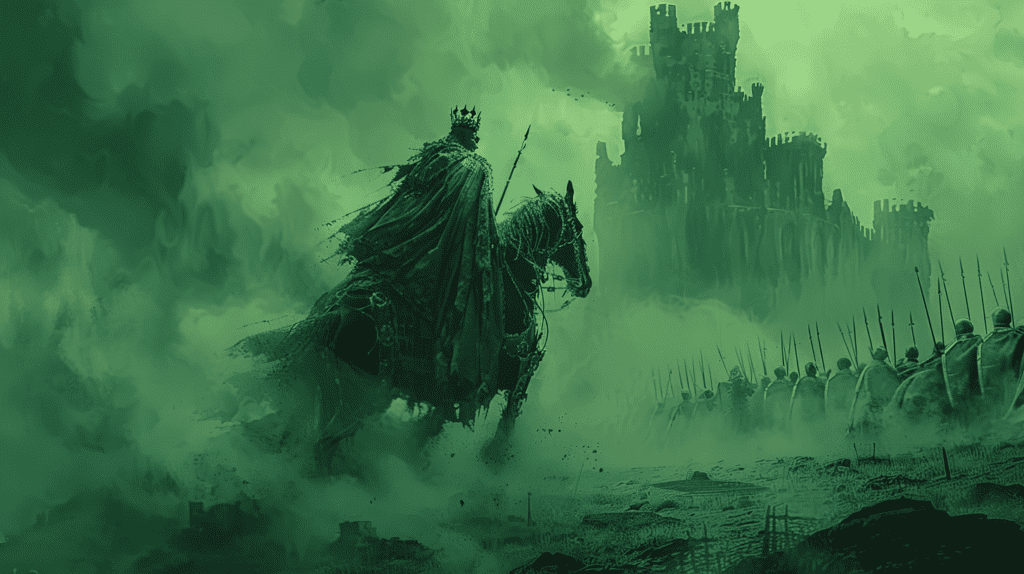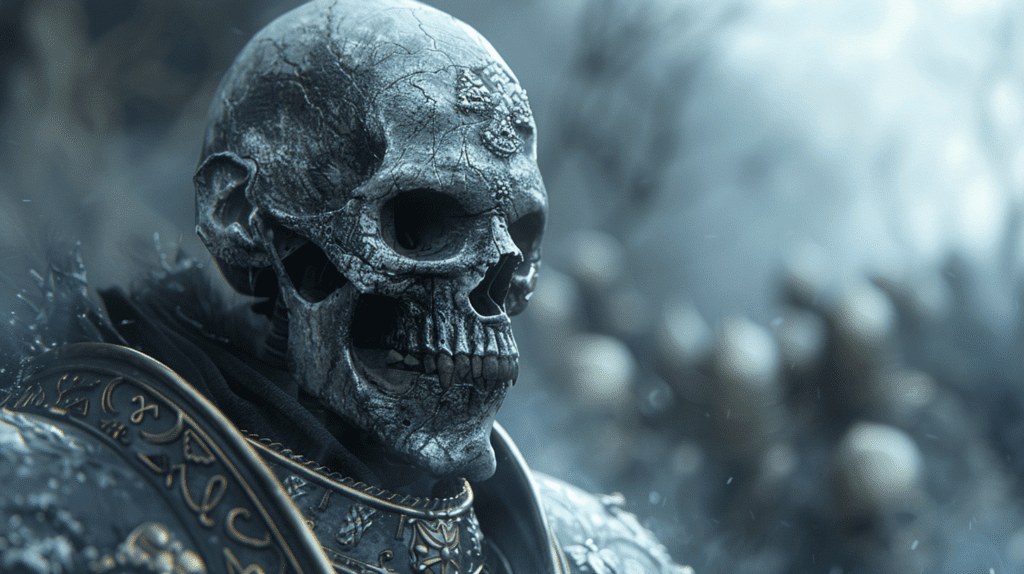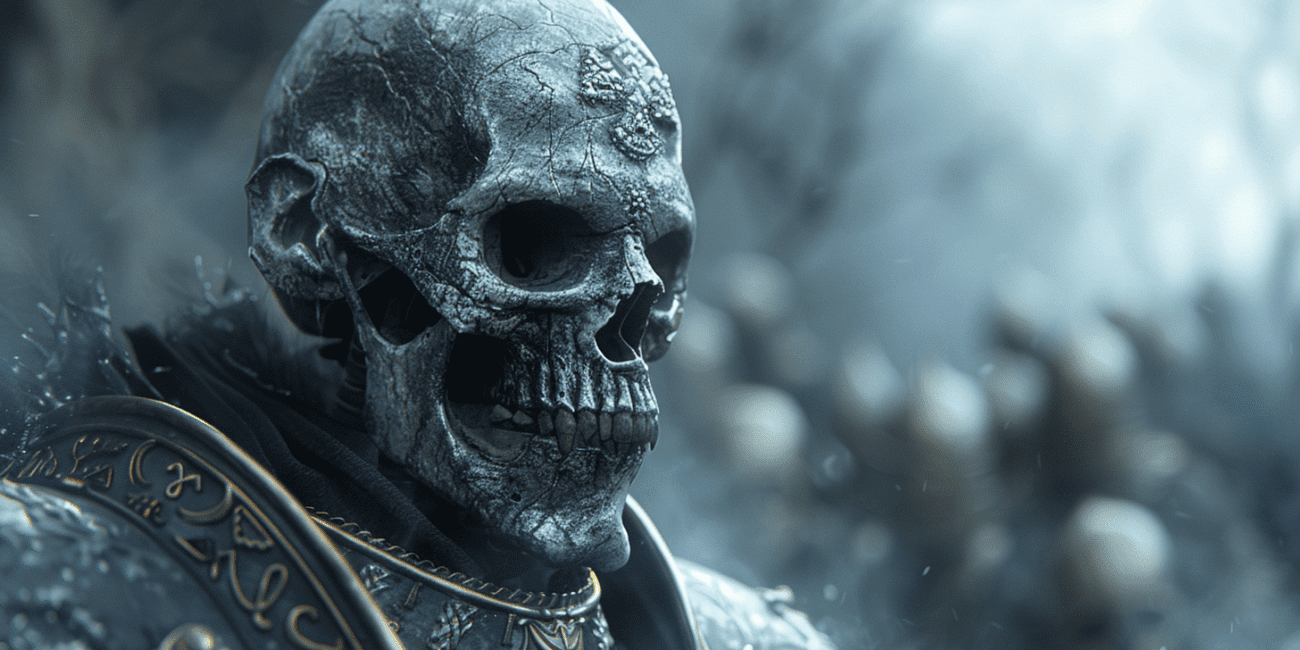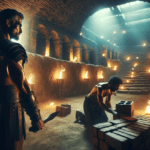Army Summary
Army Name: Undead
Total Units: 42
Units with Crushing Strength ≥ 1: 18
Units with Piercing ≥ 1: 2
Avg Points: 151.4
Avg Defense: 4.2
Avg Melee: 4.1
Avg Speed: 6.3
Unique Keywords (count): 21
Top Keywords: Lifeleech (41), Shambling (28), Crushing Strength (18), Nimble (8), Fly (6)
Note: This summary only includes non-individual units.
Most Cost-Effective Units
| Unit Name, Size | Speed | Shots to 6 Nerve | Avg Hits | Points | Elo | Cost Effectiveness | % Kills vs Def 4 | % Kills vs Def 5 | Keywords |
|---|---|---|---|---|---|---|---|---|---|
| Revenant on Undead Great Burrowing Wyrm, Ti | 7 | 36 | 6.0 | 200 | 1346 | 1.22 | 31.9% | 6.2% | Brutal, Crushing Strength(3), Lifeleech(1), Strider |
| Mummies, T | 5 | 24 | 4.9 | 115 | -809 | 1.14 | 13.0% | 0.2% | Crushing Strength(2), Lifeleech(1), Regeneration(5+), Shambling |
| Mummies, R | 5 | 36 | 5.9 | 180 | 973 | 1.09 | 23.2% | 0.4% | Crushing Strength(2), Lifeleech(1), Regeneration(5+), Shambling |
| Skeleton Spearmen, H | 5 | 32 | 10.0 | 165 | 669 | 1.04 | 22.4% | 1.5% | Lifeleech(1), Phalanx, Shambling |
| Zombie Trolls, H | 6 | 33 | 8.9 | 190 | 1134 | 0.97 | 49.2% | 6.5% | Crushing Strength(2), Lifeleech(1), Shambling |
Understanding the Table
Elo Ratings and Cost-Effectiveness:
This table is based on 1.25 million combat simulations to determine Elo ratings, reflecting each unit's combat performance. Key metrics for cost-effectiveness are:
- Elo per Point: Measures efficiency by dividing Elo rating by point cost, showing unit performance relative to cost.
- Elo Difference: A regression-based metric showing the difference between actual Elo and expected performance. Positive values mean better-than-expected performance; negative values indicate underperformance.
Combined Cost-Effectiveness:
I combine Elo per Point and Elo Difference, using a weighted formula (60% Elo per Point, 40% Elo Difference), to calculate 'Combined Cost-Effectiveness'. This reflects cost and expected performance.
Combat Metrics:
The table also includes:
- Shots to 6 Nerve: Number of shots needed to reach a 50-50 combat breakpoint.
- Avg Hits: Average number of hits a unit achieves in combat.
- % of Kills vs Def 4 and Def 5: Unit's kill percentage against Defense 4 and Defense 5 profiles in simulations.
These metrics, along with cost and Elo rating, offer a comprehensive view of each unit's effectiveness in combat.
You can find more discussion of cost effectiveness here.
Army Discussion

The Undead army is renowned for its ability to maintain pressure and sustain through prolonged engagements. This resilience is primarily due to two key factors: regeneration capabilities and the Lifeleech keyword's prevalence. Units like Mummies exemplify this approach, with their Crushing Strength and Regeneration abilities allowing them to recover from wounds that would cripple other units, while Lifeleech provides a steady trickle of healing as they deal damage.
Moreover, the Undead's tactical flexibility is enhanced by the Shambling keyword, allowing for unexpected maneuvers through Surge. This ability to move units in the shooting phase can catch opponents off guard, creating openings for devastating charges or repositioning to secure objectives. The finesse required to maximize the potential of Surge cannot be overstated, as it often turns the tide of battle by exploiting angles and gaps in the enemy's line.
Adapting to the Evolving Meta
As the meta has evolved, the Undead have remained a competitive choice, albeit requiring more skill and practice to master. Early dominance in 2nd and the early 3rd edition showcased the army's inherent strengths, but as players have adapted to their tactics, Undead generals have had to refine their strategies. This involves a deeper understanding of unit synergies, optimal deployment, and leveraging the army's unique keywords to their fullest.
The introduction of new units and changes in the rules have also prompted Undead players to explore different compositions and tactics. The balance between traditional grinding units like Mummies and more mobile or specialized units, such as their faster titans, has become a critical consideration in army building. This diversity allows for a broader range of strategies, from attrition-based approaches to more dynamic, hit-and-run tactics.
There were a number of changes to the Undead in CoK 2024. Like many spear units, the skeleton spearmen got a bit of a buff, but it's still not clear why you'd take them over, e.g. zombies if you're looking for cheap unit strength or revenants if you actually want to kill something. Similarly, the universal changes to spell casters made the necromancer more customizable. At a base of 30 points, there are some fun builds to play around with for your support casters. And though my review doesn't generally dig into individuals, Mhorgoth seems to be almost an auto-include at this point: he adds a ton of value with his ability to fly at the double and then cast twice in the same turn. Will we see as much of him as we did in early 2nd edition?

Mastering the Undead
To truly excel with the Undead, players must embrace their army's grind-centric nature while also being adaptable. The key is to leverage the army's healing and regeneration to outlast opponents, carefully managing engagements to ensure your units can recover and return to the fray. Simultaneously, mastering the art of Surge shenanigans opens up a realm of tactical possibilities, from flank attacks to securing key objectives at critical moments.
Incorporating cheap necromancers for additional healing and support further amplifies the army's resilience, allowing your main combat units to remain in the fight longer. However, reliance on these elements requires careful positioning and protection of your support units, as their loss can significantly impact your army's staying power.
Additional Resource Links
- Countercharge Army Review (December 2023)
- Dash28 Updated Army Review (CoK 2024)
- Regnum Aeternum Battle Reports
- Caffeinated Warlord YouTube Channel
One Comment
Comments are closed.




[…] a practical example, consider my recent Undead army review. Units like Skeleton Spearmen are incredibly cost-effective on a point-per-wound basis, but […]